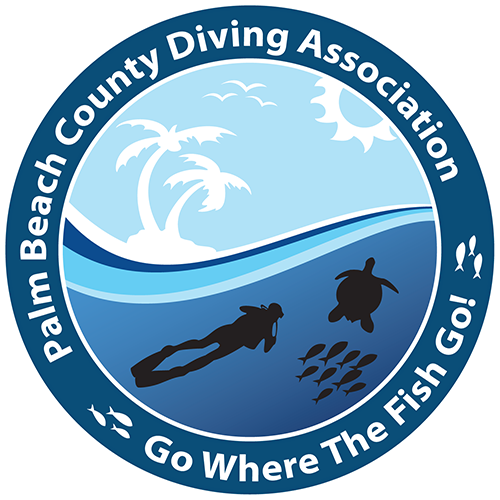Gulf Stream Effect
Silky sharks are common residents to the Gulf Stream off the Florida coast.
The Gulf Stream influences almost every aspect of diving along the Palm Beach Coast, including shallower sites near shore.
This mighty “river within the sea” is the second largest oceanic current on the planet, flowing northward from the western Caribbean past the Florida Coast, and on into the North Atlantic all the way to the British Isles.

Early European explorers and merchants quickly learned of the presence and power of the Gulf Stream as it makes its way from the lower Florida Keys and up along Florida’s eastern coastline.
When early European explorer Juan Ponce de León attempted to follow the Florida coastline from the north he encountered something very unexpected. In one of his entries in his log April 22, 1513, Ponce de León noted: “Although we have good wind, rather than making way, we appear to be drifting backwards.”
Apparently his sailing ships were no match to the mighty ocean current as it proved to be more powerful at times than the wind, carrying him backwards at various legs of the journey instead of allowing him to proceed on his intended course.
Like a second act, a feature that plays an important role to the cause and effect of the Gulf Stream on the Palm Beach Coast is the Continental Shelf.
Following the Florida coast, the contours of the continental shelf start to become increasingly narrow. By the time it reaches Boca Raton, 50 miles north of Miami, the shelf spans less than 6 miles in width. Continuing up the coast to Palm Beach, the shelf retains its narrowest point than anywhere else along the Eastern Seaboard.
Adding to this geological quirk, the same stretch of coast bulges eastward, placing it more squarely into the path of the Gulf Stream. As a result, this massive flow of clear, tropical water tracks closer to shore along Palm Beach County than anywhere else along the North American Continent. This provides the clearest waters divers will encounter in Florida, with underwater visibility that can reach into the 80 to 100-foot range.

This giant bluefin tuna weighing over 500 lbs. was photographed right here off the Palm Beach County, Florida coast.
The proximity of the Gulf Stream to the coast not only provides divers with clearer water, but also enriches the marine environment. The constant flow of water enlivens area reefs, bringing the nutrition needed for corals, sponges and fish life to thrive. The flowing water serves as an oceanic highway of sorts for a multitude of migratory and open ocean marine life from sharks to sea turtles, jacks, mackerel, tuna, sailfish and marlin to even Mola molas (ocean sunfish), manta rays, and whales,
If it swims in the Atlantic, it will travel along this corridor, passing the coast of Palm Beach County coastine along the way.


